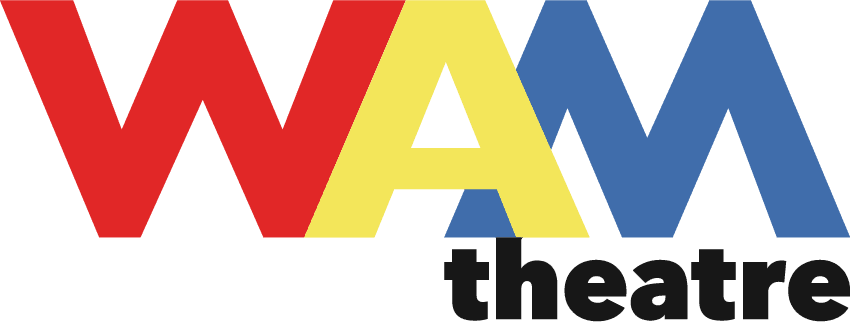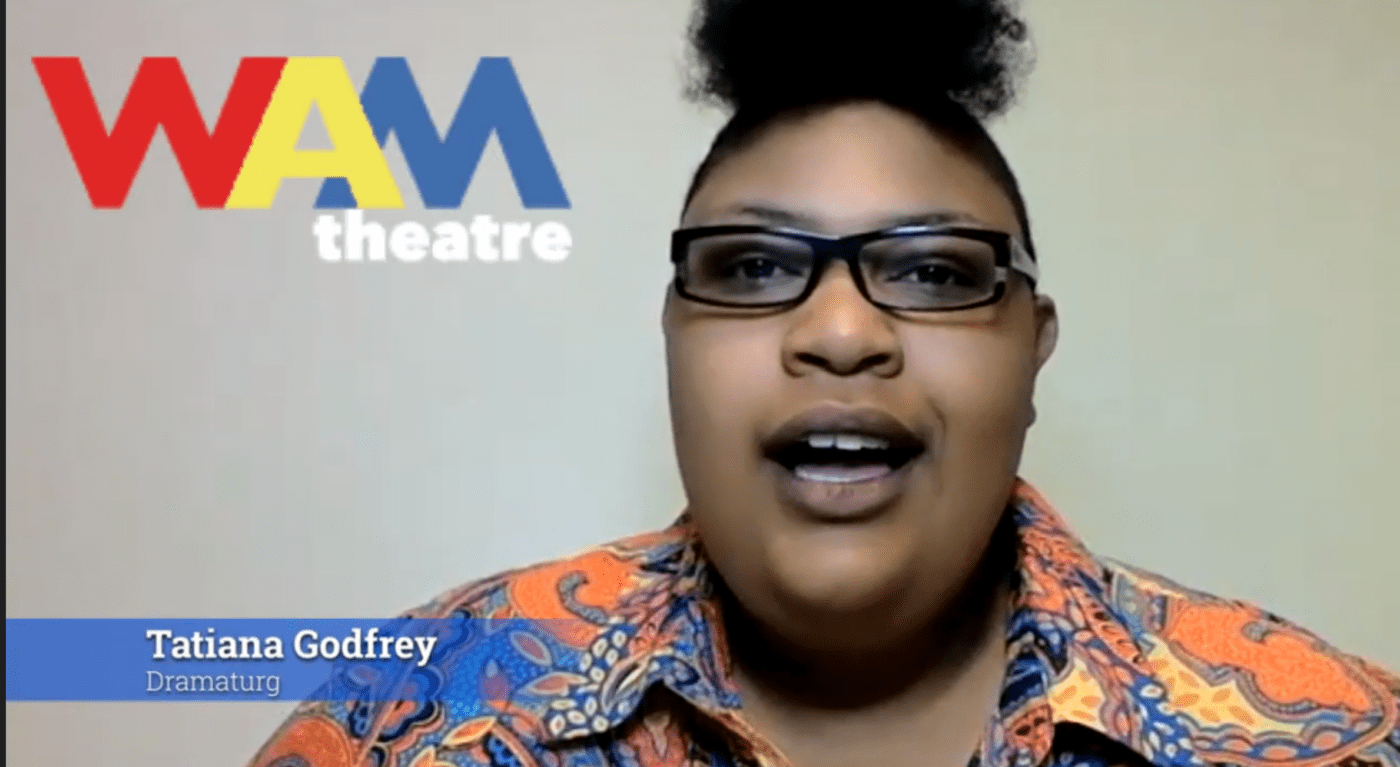by Tatiana Godfrey, WAM Theatre Dramaturg
The work of a Production Dramaturg can include curating historical or cultural research, providing a glossary of terms within the play, connecting the creative team to consultants and and providing real time feedback throughout the rehearsal process. I served in this role for WAM’s recent production of Kamloopa: An Indigenous Matriarch Story.
The Production Dramaturg also serves as a bridge between the audience and the creative team. Every time I work as a production dramaturg, one of the major questions I ask myself is “what does the audience need to know in order to understand the show?” Some of the answers to this question came in the form of dramaturgical boards that were in the lobby of the Elayne P. Bernstein theater, program notes, blogs and articles on the WAM website and social media and interviews about the play in the local media. In addition to all of this, I decided to create a series of satirical videos that served to challenge pre-existing assumptions about Indigenous folx to post on WAM social media platforms in the run up to the performances.
Something you may not know about me personally is that outside of my work as WAM’s Dramaturg, I perform as a comedian and satirist. (Linked is a comedy special about race that my writing partner and I made. Our tagline is: “She’s a Black millennial and he’s an old Jew, but somehow it works.”)
Before we began our Kamloopa rehearsal process, playwright Kim Senklip Harvey stressed the importance of setting our audiences up to laugh and appreciate the many funny moments within the play; at its root, this is a contemporary comedy. In her interview with WAM Associate Artistic Director Talya Kingston, Kim asserted that “I think comedy is the only way to engage people with any vulnerability.” Allowing predominantly non-Native audiences an opportunity to laugh alongside her characters is the way Kim addresses themes and content, such as intergenerational trauma and the erasure of First Nations Peoples, that might be difficult for some audiences to understand or reckon with.
Following Kim’s cue to give our audience permission to laugh, I used my comedy background to craft short “mockumentary” style videos. In them, I play a fictionalized version of myself, a well-intentioned non-Indigenous interviewer who inevitably is more ignorant than informational. My guests, storytellers Alysha Collie and Dallas Yellowfly from 3 Crows Productions and pianist Connor Chee politely sit through my ignorance, but were actually in on the joke. They helped develop the content of each video and improvised their own script ideas, contributing to the storytelling.
Connor is an old friend. We first met in the 7th grade at the Cincinnati School for the Creative and Performing Arts. We were both drama majors. My second major was creative writing; Connor’s second major was piano. In our youth, he played regularly at Carnegie Hall as the winner of various piano competitions. We’re both no strangers to posting videos with the hopes of garnering some social currency. We used to have a series of videos, that have since been deleted from the Internet, of us accepting ridiculous tasks for donations. I once ate ten live crickets while Connor filmed; I filmed Connor eating an entire ladleful of cinnamon. (Things were simpler, then.) Today, he’s a Grammy voter and is back on Navajo land in Arizona. He really understood the comedy and came up with a lot of the jokes that highlight the negative stereotypes of Indigeneity that he’s encountered in his life.
Alysha, Dallas and 3 Crows Productions I met through a virtual storytelling workshop for educators. The company, based in Vancouver, uses Indigenous storytelling to promote anti-racism, create awareness of the intergenerational impacts of Residential Schools in Canada, and to promote mental health to Indigenous youth. In the workshop, they shared personal stories from their culture and from their lives that really helped to frame the ongoing impact of colonialism.They, too, stressed the importance of using humor to reach audiences, especially children, and to have conversations about difficult topics. Reaching out to them seemed like a no-brainer, and they understood the joke of having them tell stories that are not what an average American might expect from an Indigenous storyteller.
I, sadly, can’t claim this gimmick as my own. Zach Galifianakis and his talk show and feature film Between Two Ferns is a great example of how this comedy works: the interviewer is rude or ignorant, and the guest (in on the joke) is not amused. Martin Short has a version of this comedy with his character Jiminy Glick, and of course who could forget Chris Farley’s recurring bumbling interviewer bit on Saturday Night Live?
As far as the goal of preparing audiences for a comedy, it became clear that not everybody understood the satirical nature of the videos. When I showed them to friends and other WAM staff, some laughed a lot, others were confused. I filmed the video with 3 Crows first, and it became the example of what I was hoping to do with the series. Connor understood the joke, but suggested that it worked too subtly. How is a story about going to Michaels funny? With that in mind for his video, we layered into the dialogue multiple stereotypes that “Tati” believes about Native peoples. I thought we played it too on the nose, but the feedback I received for my video with Connor is that it was a hilarious take undercutting the widely believed negative stereotypes about Indigenous peoples. We released this one first to provide context for the subsequent video. But the disparate reactions to the videos makes it hard to gauge how successful I was at meeting my goal.
Going forward as company dramaturg, and future production dramaturg for WAM shows, I’m continuing to think about the potential of satirical videos to help provide context for our audiences. If you’ve made it this far into the blog post, I’m going to assume you’ve watched the videos. Did you think they were funny? Did you question your assumptions about Indigeneity? Would you think Kamloopa was a comedy based on these? These are questions that I encourage you to not only think about but reach out to me about. Your feedback would definitely help shape the future of this series and help me better understand how comedy can work as a dramaturgical tool. Reach out to me at tatiana@wamtheatre.com.
This project was supported by a grant awarded by Berkshire Taconic Community Foundation’s Arts Build Community initiative with funding from the Barr Foundation and by a Massachusetts Humanities Digital Capacities Grant.

